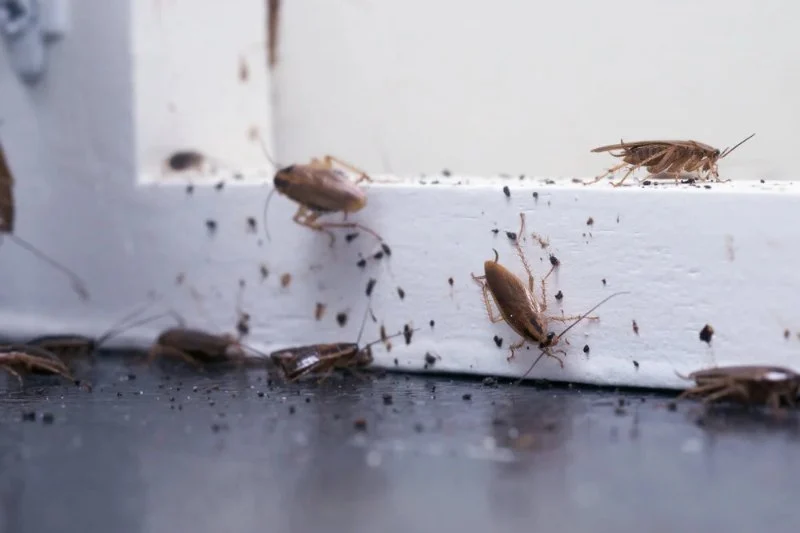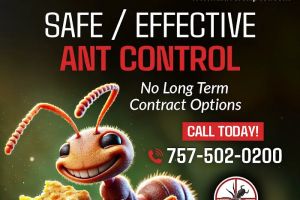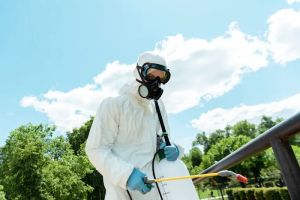
How to Identify Pest Hotspots in Your Home
Pest infestations in your home can be a major source of stress and damage. Identifying and addressing pest hotspots is crucial for effective pest control. In this article, we’ll discuss how to identify the common pest hotspots in your home, the signs to look out for, and how to manage these areas effectively.
- 1. Understanding Pest Hotspots
- 2. Common Pest Hotspots in Your Home
- 3. How to Inspect Your Home for Pest Infestations
- 4. Preventive Measures to Minimize Pest Infestations
- 5. When to Call a Professional Pest Control Service
1. Understanding Pest Hotspots
Pest hotspots are areas in your home that are particularly attractive to pests due to factors like moisture, food availability, and shelter. These areas provide an ideal environment for pests to thrive, making them more likely to experience infestations. Understanding where these hotspots are located can help you take proactive steps to prevent and manage pest problems.
2. Common Pest Hotspots in Your Home
Here are the most common areas where pests are likely to be found in your home:
1. Kitchen and Pantry: The kitchen is a prime location for pests like ants, cockroaches, and rodents, especially around food storage areas and trash bins. These pests are drawn to food crumbs, spills, and leftover food. Always clean up immediately after meals and store food in sealed containers.
2. Bathrooms: Bathrooms are perfect breeding grounds for pests like silverfish and termites. The high humidity and moisture in these areas make them ideal for pests seeking water. Check for leaks in pipes and around tubs, sinks, and showers to prevent water buildup.
3. Basements and Attics: These areas provide plenty of dark and undisturbed spaces for pests like mice, termites, and spiders. Ensure these areas are sealed tightly and inspect for any signs of infestation, such as droppings or webs.
4. Window and Door Frames: Gaps or cracks around windows and doors provide easy entry points for pests. Insects like ants and termites often enter through these areas, especially if there’s moisture around the frame. Inspect these areas regularly and seal any cracks or openings.

Universal Pest
1620 Centerville Turnpike STE 109, Virginia Beach, VA 23464, USA
3. How to Inspect Your Home for Pest Infestations
To identify pest hotspots, perform a thorough inspection of your home. Here's how:
- Look for Signs of Activity: Check for droppings, nests, or dead insects around the common hotspots.
- Inspect Entry Points: Examine door and window seals, vents, and pipes for cracks or holes that could serve as entry points for pests.
- Check for Moisture: Pests thrive in damp environments, so check areas with high humidity, such as bathrooms, kitchens, and basements, for leaks or water damage.
- Pay Attention to Smells: A musty or foul odor may indicate the presence of pests, such as rodents or decaying insects.
4. Preventive Measures to Minimize Pest Infestations
Once you've identified the hotspots, here are some steps to prevent pests from invading your home:
- Seal Gaps and Cracks: Use caulk or weather stripping to seal any openings in door and window frames.
- Store Food Properly: Store food in sealed containers and dispose of garbage regularly to reduce food sources for pests.
- Control Moisture: Fix any plumbing leaks and use a dehumidifier to keep moisture levels low, especially in bathrooms and basements.
- Clean Regularly: Keep your home clean, especially in areas like the kitchen, to avoid attracting pests with crumbs or food scraps.
5. When to Call a Professional Pest Control Service
If you've tried preventive measures but still see signs of infestation, it may be time to call in the professionals. Pest control experts have the tools and knowledge to handle more severe infestations and can provide long-term solutions to keep your home pest-free.
At PestControlHub, we offer expert advice and services for managing pest issues in your home. Check our site for more information on pest prevention products and professional pest control services that can help protect your home.








 Wildlife Resolutions4.0 (443 reviews)
Wildlife Resolutions4.0 (443 reviews) Pest Marshals of Toledo5.0 (2 reviews)
Pest Marshals of Toledo5.0 (2 reviews) LS Rodent Proofing & Pest Control Service5.0 (4 reviews)
LS Rodent Proofing & Pest Control Service5.0 (4 reviews) Best Termite & Pest Control4.0 (16 reviews)
Best Termite & Pest Control4.0 (16 reviews) Varment Guard Wildlife Services5.0 (28 reviews)
Varment Guard Wildlife Services5.0 (28 reviews) Pestban Inc4.0 (394 reviews)
Pestban Inc4.0 (394 reviews) How to Use Monitors to Detect Pest Entry: A Comprehensive Guide
How to Use Monitors to Detect Pest Entry: A Comprehensive Guide How to Predict Which Pests Will Invade Next – Smart Pest Forecasting for the U.S.
How to Predict Which Pests Will Invade Next – Smart Pest Forecasting for the U.S. How to Conduct a Pest Risk Assessment at Home – Expert Guide
How to Conduct a Pest Risk Assessment at Home – Expert Guide How to Block Pest Entry Around Deck Joists: Effective Solutions
How to Block Pest Entry Around Deck Joists: Effective Solutions How to Safely Use Fumigation Methods: A Comprehensive Guide for Homeowners
How to Safely Use Fumigation Methods: A Comprehensive Guide for Homeowners Why Pests Are More Active After Rain: Understanding the Link Between Weather and Pest Behavior
Why Pests Are More Active After Rain: Understanding the Link Between Weather and Pest Behavior